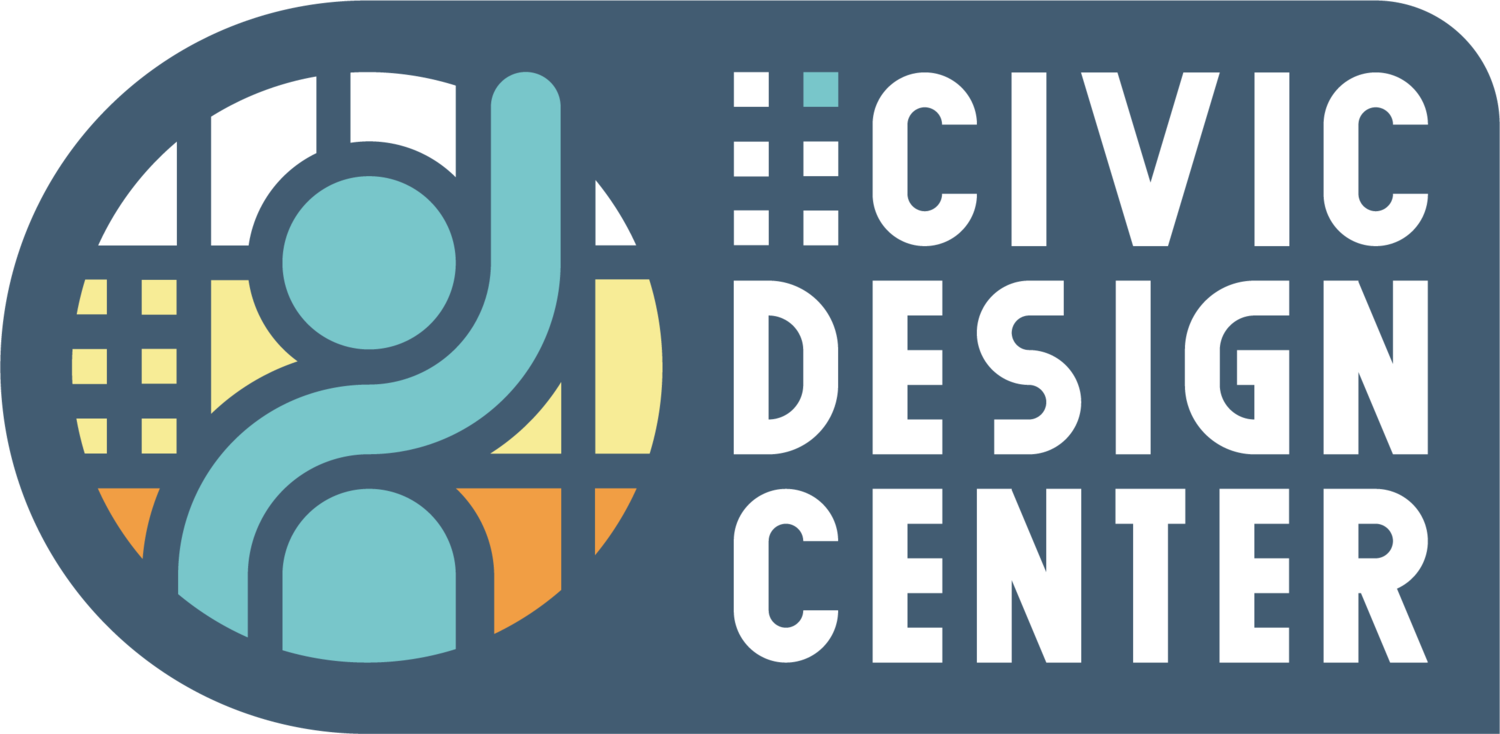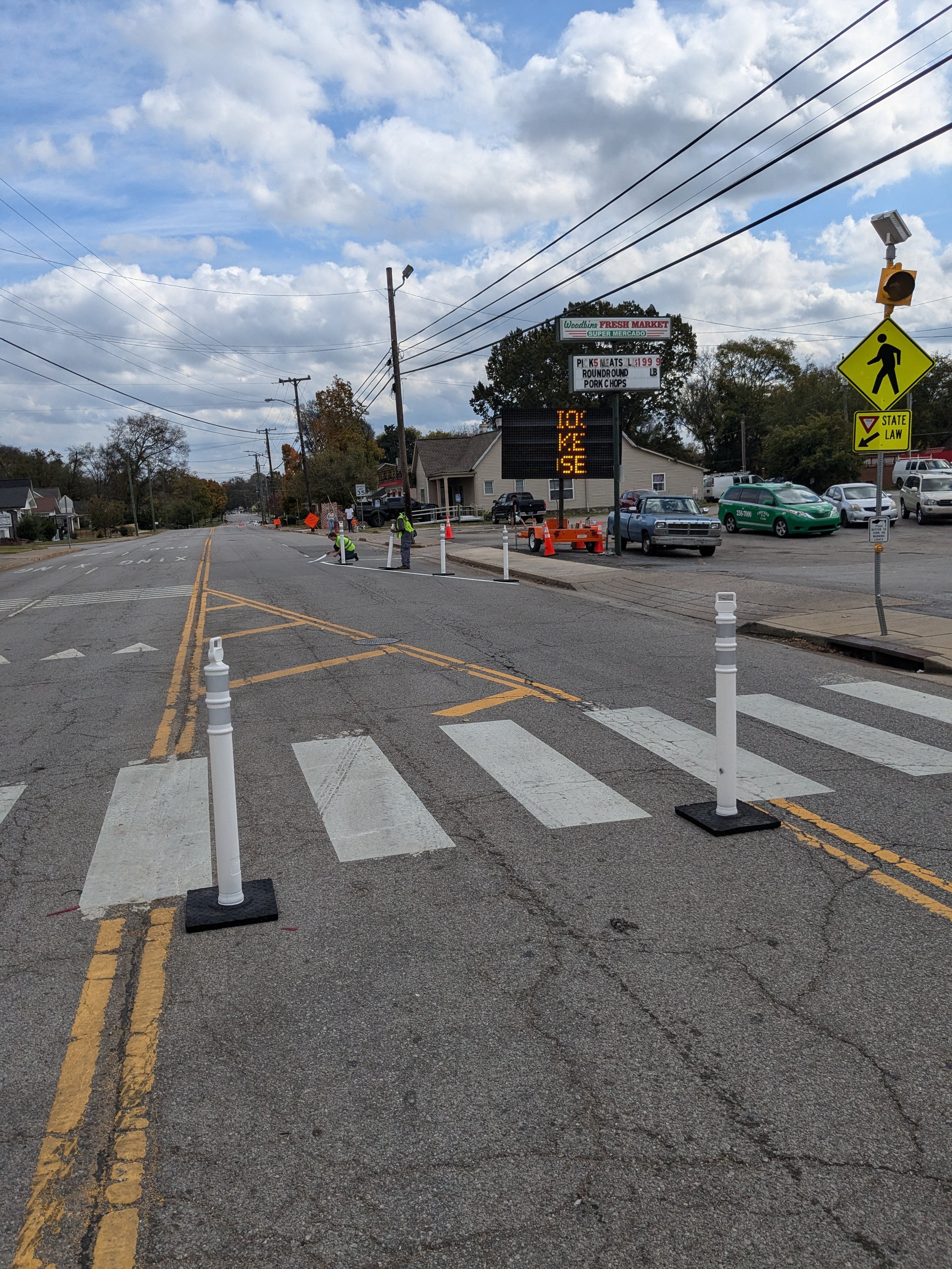From Dangerous Pike to Welcoming Boulevard
By Nia Smith, Community Design Coordinator
5 min read This blog provides a recap for the last 6 months of efforts towards making a safer, slower, healthier Antioch Pike for students, seniors, and residents.
Important Note: This project began in the late spring of 2024 with the scope to focus on Antioch Pike with the support of The Tennessee Department of Health. During the Antioch Pike street closure for Desfiles de Navidad in December 2024, a hit and run crash on an adjacent street (Sunrise Ave and Wingate Ave) caused the death of Jianzhu Yu, a resident of Radnor Towers. It is expected that a frustrated driver was reckless in finding a shortcut which resulted in the tragedy; the driver has still not been found. Following this event, the scope of the project is being expanded to include improvements for neighborhood streets.
The Antioch Pike Tactical Urbanism project is a transformative initiative aimed at enhancing the built environment along a one-mile stretch of Antioch Pike, spanning from Nolensville Pike to McCall Street. This project seeks to address critical community needs, promote health equity, and create a vibrant, accessible corridor for all residents. Antioch Pike serves as a vital transportation artery, connecting neighborhoods, businesses, schools, and public spaces, encompassing the MNPS Glencliff Cluster. We are working with Nashville Department of Transportation and Multimodal Infrastructure (NDOT) and Walk Bike Nashville to create temporary healthy built environment interventions and activations that could inform lasting change on Antioch Pike. While our project focuses on the Antioch Pike scope, NDOT is also working to make changes on Nolensville Pike.
While Antioch Pike is a vital vehicle connector, it is a major barrier when it comes to multimodal transportation due to a lack of safe pedestrian crossings and accessible public spaces. While there are sidewalks on both sides of Antioch Pike, the lack of sidewalks on the residential streets that intersect with it adds to the deficiencies above, disproportionately affecting vulnerable populations.
Residents in this area, including low-income residents, seniors, and people with disabilities, experience health disparities due to limited access to green spaces, physical activity opportunities, and social interaction. Despite being within a mile of Coleman Park and Community Center and 3 miles of Whitsett Park, none of them are within safe walking or biking distance of Antioch Pike. Wright Middle School has a community garden and the space for a play park, but would still require a majority of students to have to cross the busy street. The pike is not far from Seven Mile Creek, which already has a greenway to the south, but it does not currently connect to the pike. These disparities contribute to adverse health outcomes. Our recommendations in Shaping Healthy Communities (2005 p105-119) address some of the ways the built environment can affect health outcomes within suburbs.
Evaluating the Conditions
This slideshow shows the pedestrian traffic counts for three sites along Antioch Pike: Nolensville, Wright Middle, and Glencliff
During our public life study, we noticed that the high schoolers were some of the most frequent speeders on the pike. We heard from parents and school administration, that the students often use the street for drag racing. While working with Glencliff High, we plan to help implement a speed safety education program, so young drivers understand their responsibility to the road.
Using Public Input, we received over 350 responses from 63 participants. While that survey is still ongoing, we used initial submissions to inform our recommendations below. Commenters voiced concerns regarding cars speeding close to sidewalks without buffers, making pedestrians feel unsafe and uncomfortable. Additional comments included requests for lane reductions, bike lanes, and more green space. Rumble strips and more stoplights at intersections were also requested, to make cars come to a complete stop along such an uninterrupted stretch of road.
Testing Safety Improvements
Using the data we collected over the summer, the Design Studio identified some solutions aligned with community comments. For the first implementation phase, we put up bollards on the Nolensville Pike side of Antioch Pike to reduce the number of eastbound lanes at the entrance. We didn’t find many problems with this change—most cars followed the new curve of the road and switched lanes as needed once there were two lanes again. This helped to slow cars as they entered Antioch Pike!
Near Glencliff Elementary School, we painted bulb-outs with cornstarch and placed bollards at the intersection of Antioch Pike and Glencliff Rd. Based on our initial findings, we thought pedestrian refuge at this intersection was a major priority. However, we heard from community members that this first version needed a change as some elements got in the way of regular drop off patterns at the school. We went back out that week to make some adjustments; it seems to be working well!
We are also excited to work with the elementary school to develop some designs that work well for their needs, making sure each student can get to school safely. Some of these changes will inform next year's quick build, so now’s a great time to see what may and may not work. During Open Streets in October, neighbors learned to finger knit and decorated Kid Crossing Turtles. This was an idea from some high schoolers in the Glencliff High ITOP program. The Turtles are yarn bombed, which is a form of guerilla urbanism to decorate infrastructure with knitted elements. They are a fun way to celebrate the new crosswalks installed at Glencliff High and Wright Middle School. Considering the frost that followed in the past few weeks, it was wonderful to see them keeping warm! The new crosswalks at the schools were installed based on our findings during the Public Life Survey.
Boulevard Treatment
This was the most popular street design, based on community feedback. You can see some street mixes below.
After our final engagement of the year at Desfiles de Navidad, hosted by Nashville Noticias, we’ve developed a final recommendation for Antioch Pike. The traffic study showed us that Antioch Pike could handle a lane reduction due to the current volume of traffic. This idea, coupled with a desire to bring trees back to Antioch Pike, has led us to suggest that a street boulevard treatment, like Riverside Dr, with trees in the middle of the lane. Additional trees can be planted on the opposite side of the lanes, protecting pedestrians, similarly to 12 South. A bike lane should be added between the sidewalks and the street trees to increase multi-modal mobility along the corridor.
We’ve heard community members request cars removed from Antioch Pike altogether. While the street would need to be open for residents and school buses, Antioch Pike benefits from having multiple thru-streets along it and additional streets parallel to it, which allows for different traffic patterns. Glencliff High students could drive behind the school, which would greatly slow their exit. By removing a huge capacity of cars from the street, we can improve safety conditions and air quality, without sacrificing transportation access. This would also help get trucks off of the Pike, which neighbors have been frustrated with, as the noise pollution and weight of the vehicles make for an uncomfortable living experience. We’d love to hear your thoughts about reducing the number of cars on Antioch Pike!
With or without reducing the volume of cars, Antioch Pike has the opportunity to be Nashville’s first urban greenway. The sidewalks on both sides of the street and an incorporation of the above safety measures could make the street a comfortable transition from Sevenmile Creek Greenway to Nolensville Pike. Pedestrian safety isn’t just about protecting pedestrians from cars; it’s also about encouraging pedestrian access all across a neighborhood. This urban greenway would serve as a community travel route, connecting nature to a cultural hub.
What’s next
As always, you can provide feedback to this survey!
You can also place your thoughts and comments below within the blog.
As we are planning the next quick build, the survey is the best place to let us know about your priorities. The road is being repaved sometime in the next few years so we want to these Quick Build changes to be able to inform the future roadway configuration. While the quick build will be more permanent than the tactical urbanism changes, the repaving will pave the way for a more permanent design.

















